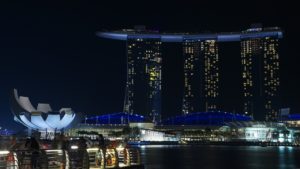It’s one of the greatest transformations the world has ever seen…
In 1965, the small island nation of Singapore was in bad shape. It had few natural resources, double-digit unemployment, and an uneducated population. At just 275 square miles (a third the size of Greater London and four-fifths the size of the U.S. city of San Diego), it was one of the smallest countries in the world. Aside from its location in the middle of the major sea route between India and China, Singapore didn’t have a lot going for it.

Â
monikawl999/Pixabay
Fast forward to today, and Singapore is one the most prosperous, innovative and well-developed countries in the world.
It’s also one of the wealthiest. Its GDP per capita has grown more than 10,000 percent over the past 50 years, and today stands at US$53,000 per capita. That compares to US$57,000 per capita for the U.S. and US$8,000 per capita for China. Singapore has enjoyed peace and prosperity and uniquely strong governance over the past several decades.
Singapore has a lot going for it. But for most of the past few years, the country’s real estate market has been trending downwards.
What’s been going on in Singapore’s residential property market
The following graph shows the long-term index of residential prices, from Singapore’s Urban Redevelopment Authority (URA).
As you can see, after decades of strong growth, prices for both residential real estate (the red line) and office real estate (the grey line) have been flat or trending downward in recent years. The residential real estate has seen a compound annual growth rate (CAGR) of 6.7 percent since the first quarter of 1975. And office real estate has seen a CAGR of 5.2 percent in that timeframe. This growth rate handsomely beats the long-term rate of inflation.

Why have prices been trending downwards in recent years? Well, there are two major factors at play here.
Firstly, Singapore has seen a persistent excess of supply of new residential units come into the market since 2013.

